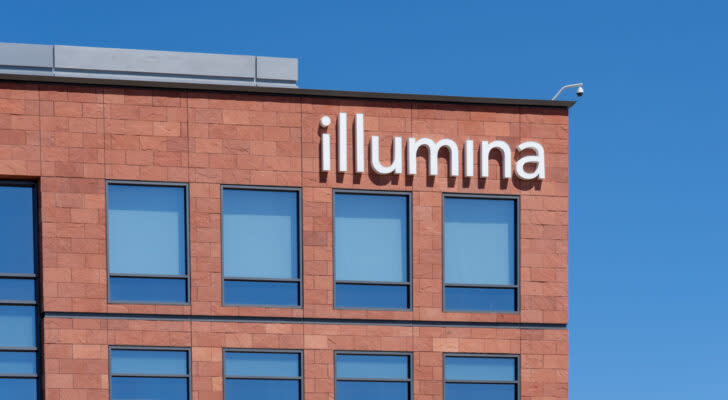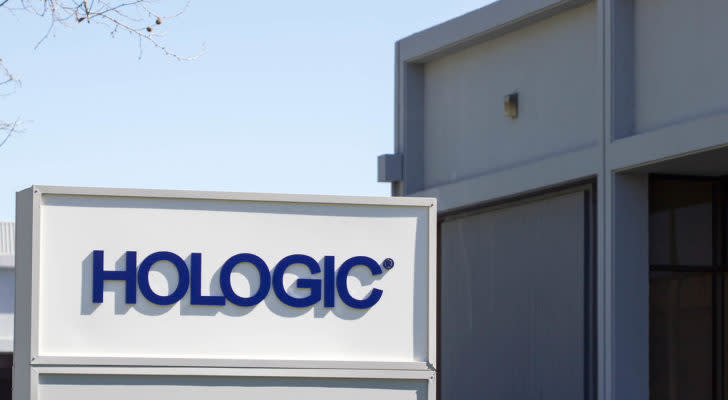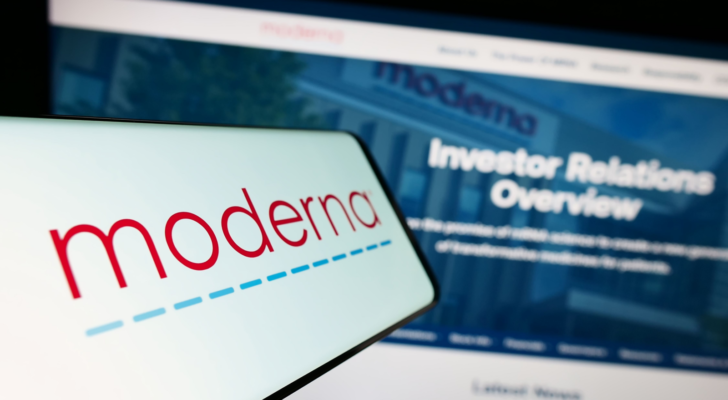7 Mighty Healthcare Stocks Changing the Game of Medicine
With so many question marks facing the viability of the equities sector, concerned investors may want to turn their attention to compelling healthcare stocks. Primarily, the sector benefits from permanent relevance. It’s in a nation’s best interest to keep its citizenry healthy and productive, meaning that there will always be funds directed toward the broader health and wellness space.
Another factor that could bolster healthcare stocks is its relative insulation from the economy. Now, don’t get me wrong – virtually all sectors experience some impact from outside pressures. However, as stated earlier, health-related innovations command ongoing attention because of their holistic benefits. Put another way, research into treating the world’s most vexing diseases and conditions won’t fade away because the Dow Jones lost a few points.
Of course, like any other industry, the health and wellness ecosystem features a broad range of ideas, from the reliable to the downright speculative. Below are several compelling healthcare stocks to consider based on your risk-reward preferences.
InvestorPlace - Stock Market News, Stock Advice & Trading Tips
Illumina (ILMN)

Source: shutterstock.com/JHVEPhoto
A top-shelf biotechnology firm, Illumina (NASDAQ:ILMN) provides a line of products and services that cover the sequencing, genotyping, gene expression and proteomics markets. However, the drawback at the moment is ILMN’s volatility. In the trailing 52 weeks, shares lost a considerable amount of equity value. However, the bulls have been pushing back recently, attempting to reinvigorate sentiment.
For those willing to take a contrarian view on major healthcare stocks, Illumina presents an intriguing opportunity. According to MarketsandMarkets, the underlying global genomics market printed revenue of around $46.2 billion last year. Further, experts project that the segment could hit a valuation of $83.1 billion by 2028. If so, that would translate to a compound annual growth rate (CAGR) of 12.4%.
To be fair, ILMN is priced at 132.32X forward earnings, which is very pricey. However, analysts overall are taking a longer-term view with Illumina, pegging its shares a consensus moderate buy. Also, the high-side target lands at $258, offering significant upside possibility.
Hologic (HOLX)

Source: Tada Images / Shutterstock.com
A medical technology company, Hologic (NASDAQ:HOLX) mainly focuses on women’s health. Per its public profile, the company sells medical devices for diagnostics, surgery, and medical imaging. These solutions cover critical areas such as breast cancer screening, bone density assessments, and other women’s health conditions. To be fair, it printed a disappointing performance in the past 52 weeks. Still, recent momentum brings optimism to the table.
According to another MarketsandMarkets report, the global diagnostic imaging market printed revenue of $26.5 billion last year. Experts in the field believe that the segment could reach a valuation of $34.6 billion by 2028. If that turns out to be the case, we’re talking about a CAGR of 5.5%.
Even better for HOLX, the global mammography sector is presently worth $2.3 billion. However, the landing point for this arena could be an ecosystem worth $6.9 billion by 2033. That would come out to be a CAGR of 11.6%.
Analysts are hopeful, pegging shares a consensus moderate buy with a $79.30 price target. Therefore, it’s one of the top healthcare stocks to consider.
Johnson & Johnson (JNJ)

Source: Alexander Tolstykh / Shutterstock.com
Following the spinoff of its consumer healthcare unit, Johnson & Johnson (NYSE:JNJ) now concentrates on its core pharmaceutical and medical technology divisions. While one of the most relevant healthcare stocks, JNJ incurred a soft performance last year. Still, analysts remain overall optimistic on JNJ, rating shares a consensus moderate buy with a price target of $178.08. Further, the high-side target comes in at $215.
Fundamentally, the case for J&J centers on its massive total addressable markets. According to Fortune Business Insights, the global medical devices market reached a valuation of $512.29 billion in 2022. Even better, experts believe that the segment could reach $799.67 by 2030, exhibiting a CAGR of 5.9%.
And that’s an appetizer. Per Acumen Research and Consulting, the global pharmaceutical market printed a value of $1.5 trillion in 2022. Those in the know believe the ecosystem could expand at a CAGR of 6.4% to 2032, resulting in a market size of $2.8 trillion.
If these stats weren’t enticing enough, J&J offers a dividend yield of 2.89%. Thus, it’s a sensible idea for healthcare stocks to buy.
Moderna (MRNA)

Source: T. Schneider / Shutterstock.com
Moving onto the riskier side of the spectrum, Moderna (NASDAQ:MRNA) brings an enticing narrative to the table. During the worst of the Covid-19 crisis, Moderna represented one of the top players developing a vaccine. Unsurprisingly, though, as fears of the SARS-CoV-2 virus faded, so too did the relevance of the vaccine storyline. Nevertheless, the company can leverage the underlying messenger-RNA technology to forward myriad other innovations.
In fact, it’s well on its way. According to Nature Medicine, Moderna is translating the lessons learned from developing the Covid vaccine to personalized anti-cancer vaccine. This involves a combination of mRNA and immunotherapy tested in a melanoma trial.
Adding to the enthusiasm, Grand View Research points out that the global cancer vaccine market size reached a valuation of $7.31 billion in 2022. Analysts see the segment expanding at a CAGR of 11.04% to 2030, culminating in a valuation of $16.84 billion.
Wall Street pegs MRNA stock a moderate buy with a $129.75 average price target. Further, the most optimistic target clocks in at $310.
Editas Medicine (EDIT)

Source: vxhal/ShutterStock.com
Walking further into the speculative arena, Editas Medicine (NASDAQ:EDIT) is really suited for investors who can tolerate extreme volatility. True, it’s one of the healthcare stocks that managed to land a positive return last year. However, just look at 2023’s chart. Shares have bounced all over the map, which will test almost anyone’s patience. Still, this small-capitalization play offers a tempting proposition.
A clinical-stage biotech firm, Editas specializes in developing therapies for rare diseases utilizing the CRISPR gene-editing platform. It’s a novel field, one with profound promise. According to Grand View Research, the global genome editing market reached a valuation of $6.39 billion in 2022. Moreover, analysts project that the sector could see a 17.8% CAGR expansion to 2030. At the forecast culmination, the arena could be worth $24.99 billion.
Now, if there is a glaring drawback, it’s that EDIT represents largely a narrative play. With six severe warnings against its financials, it’s no walk in the park. That said, analysts rate shares a moderate buy with a $14.33 average price target.
Verve Therapeutics (VERV)

Source: Shutterstock
Based in Cambridge, Massachusetts, Verve Therapeutics (NASDAQ:VERV) presents a compelling case for healthcare stocks based purely on science. Per its website, Verve aims to protect the world from cardiovascular disease. Undergirding this directive is gene circuity technology, which offers the potential to regulate gene expression. If successful, Verve could provide the key to addressing chronic diseases like non-alcoholic steatohepatitis (NASH) and type 2 diabetes.
To get an idea of the growth potential of VERV – assuming that all the stars align – Grand View Research notes that the related (global) gene synthesis market reached a valuation of $1.76 billion in 2022. Experts see a CAGR of 16.1% materializing between 2023 to 2030. At the forecast culmination, the segment could print revenue of $5.78 billion.
Where VERV gets tricky is in the financials. Though revenue growth is impressive on a percentage basis, nominally, it’s tiny. Further, the company suffers hefty net losses, presenting viability concerns. Still, analysts peg shares as a consensus strong buy with a $41 price target. If it gets there, we’re talking about more than tripling the time-of-writing market value.
Asensus Surgical (ASXC)

Source: Dmytro Zinkevych / Shutterstock.com
Easily the riskiest idea on this list of healthcare stocks, Asensus Surgical (NYSEAMERICAN:ASXC) offers an extremely relevant product. Specializing in surgical robotics and medical devices, Asensus is developing and commercializing minimally invasive robotic surgery systems for laparoscopy. Through this tech, surgeons can more comfortably deliver critical services while also improving patient outcomes. That’s a win-win.
However, the not-so-winning ways involves ASXC’s market performance. Frankly, the performance in 2023 was just awful. Further, shares are priced in literal penny stock territory. And that’s not a surprise given that it’s market cap is noticeably less than $100 million at time of writing. If you’re betting on Asensus, it’s exactly that – a wager at a casino.
Still, for the extremely patient, the global surgical robots market size could print revenue of $7.42 billion by 2030. That would translate to a CAGR of 9.5% from 2024. Last year, the segment reached a valuation of $3.92 billion.
While terribly risky, it’s worth pointing out that analysts anticipate shares hitting $1.50. That would be a massive return if it came true.
On the date of publication, Josh Enomoto did not have (either directly or indirectly) any positions in the securities mentioned in this article. The opinions expressed in this article are those of the writer, subject to the InvestorPlace.com Publishing Guidelines.
A former senior business analyst for Sony Electronics, Josh Enomoto has helped broker major contracts with Fortune Global 500 companies. Over the past several years, he has delivered unique, critical insights for the investment markets, as well as various other industries including legal, construction management, and healthcare. Tweet him at @EnomotoMedia.
More From InvestorPlace
The #1 AI Investment Might Be This Company You’ve Never Heard Of
Musk’s “Project Omega” May Be Set to Mint New Millionaires. Here’s How to Get In.
The post 7 Mighty Healthcare Stocks Changing the Game of Medicine appeared first on InvestorPlace.
